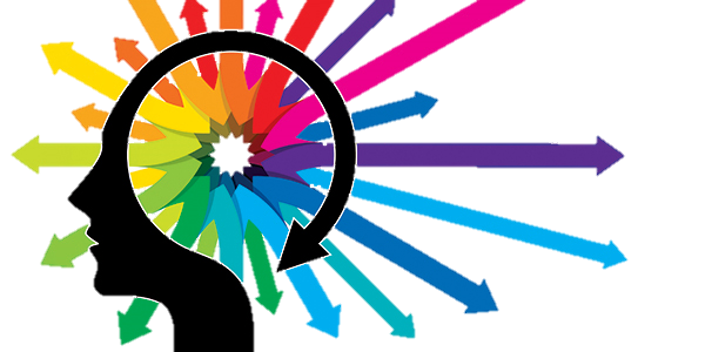- Meditation
- Mental imagery/guided imagery
- Hydrotherapy
- Social support
Click here to view a video about Georgia and the stress monster.
Relaxation Procedures
Herbert Benson, following research at Harvard University, wrote a million-dollar bestseller called ‘The Relaxation Response’. Meditation has repeatedly been found to reduce chronic anxiety. In his research, Benson found that meditation led to the following effects:
- Decrease in blood pressure
- Decrease in heart rate
- Increased energy levels and productivity
- Improved immune functioning
- Decreased self-criticism
- Decreased dependence on alcohol
- Heightened self-esteem
Follow the instructions below and you will almost immediately experience greater levels of relaxation.
Before you follow Benson’s relaxation procedure, rate your stress level on the self-inventory scale (a score of one indicates ‘very relaxed’ while ten indicates ‘very tense’):
Self-inventory scale - Tension/stress level
Low ___________________________________________________________ High
1 2 3 4 5 6 7 8 9 10
- Sit quietly in a comfortable position.
- Close your eyes.
- Deeply relax your muscles, beginning at your feet and progressing up to your face. Keep them relaxed.
- Breathe through your nose. Become aware of your breathing. As you breathe out, say the word ‘one’ silently to yourself. For example, breathe in…out, ‘one’; in…out…’one’; and so forth. Breathe easily and naturally.
- Continue for 10 to 20 minutes. You may open your eyes to check the time, but do not use an alarm. When you finish, sit quietly for several minutes, at first with your eyes closed and later with your eyes opened. Do not stand up for a few minutes.
- Do not worry about whether you are successful in achieving a deep level of relaxation. Maintain a passive attitude and permit relaxation to occur at its own pace. When distracting thoughts occur, try to ignore them by not dwelling on them and return to repeating ‘one’. With practice the response should come with little effort. Practice the technique once or twice daily but not within two hours after eating a meal, since digestive processes seem to interfere with the elicitation of the relaxation response.
After performing Benson’s meditation procedure, rate yourself again on the self-inventory scale.
Self-inventory scale - Tension/stress level
Low ____________________________________________________________ High
1 2 3 4 5 6 7 8 9 10
The Power of The Visualisation – The Mind As Cinema
Over and above the mind/brain’s ability to think thoughts and feel feelings, it also has the capacity to function in cinema mode. The ability of the mind to ‘see’ pictures by way of imagery can modify behaviour, change the state of your feelings and influence your physiology.
Sport psychologists make use of mental imagery to help athletes improve performance. Carl Simonton, in his book ‘Getting Well Again’ demonstrates how mental imagery can facilitate remission in cancer patients by strengthening their immune system.

In addition to meditation, mental rehearsal is a powerful tool reducing the symptoms of stress.
Picture the following scene of a forest that Edmund Bourne sketches for us:
‘You’re walking a path in the forest. All around you there are tall trees… pine, fir, redwood, oak… try to see them. The rushing sound of the wind blowing through the treetops is so soothing, allowing you to let go. You can smell the rich dampness of the forest floor, the smell of earth and new seedling and rotting leaves. Now you look up through the treetops until you can see the light blue sky. You notice how high the sun is in the sky. As the sun enters the canopy of the treetops, it breaks into waves which waft their way down through the trees to the forest floor. You’re watching the intricate patterns of light and shadow created as the light filters through the trees.
You take a deep breath of fresh air and breathe out, finding the subtle smells of the forest very refreshing. As you let yourself sink into the soft bed of grass or dead leaves or fragrant pine needles beneath you, you can let go of any strains or concerns… allowing the sights, sounds, and smells of this beautiful wooded area to fill you with a deep sense of peace…’ (p.253).
Mental Rehearsal
Daniel Goleman suggests that mental rehearsal can greatly improve the way you learn new skills. He writes: ‘…mental rehearsal enhances the performance of athletes.' Olympic athletes such as Laura Wilkinson, use it routinely. While preparing for the 2000 Olympics, Wilkinson broke three toes and was unable to go into the water. Rather than stop her preparations, Wilkinson sat for hours each day on the diving platform, repeatedly recreating in her mind a detailed vision of each of her dives. She went on to win an upset victory in the 2000 Olympics – the gold medal in the ten-meter platform competition.
Goleman suggests that mental rehearsal can be used in changing all types of behaviour. ‘Brain studies have shown that imagining something in vivid detail can fire the same brain cells that are actually involved in that activity. In other words, the new brain circuitry appears to go through its paces, strengthening connections, even as a person merely repeats the sequence in his mind…’ (p.161).